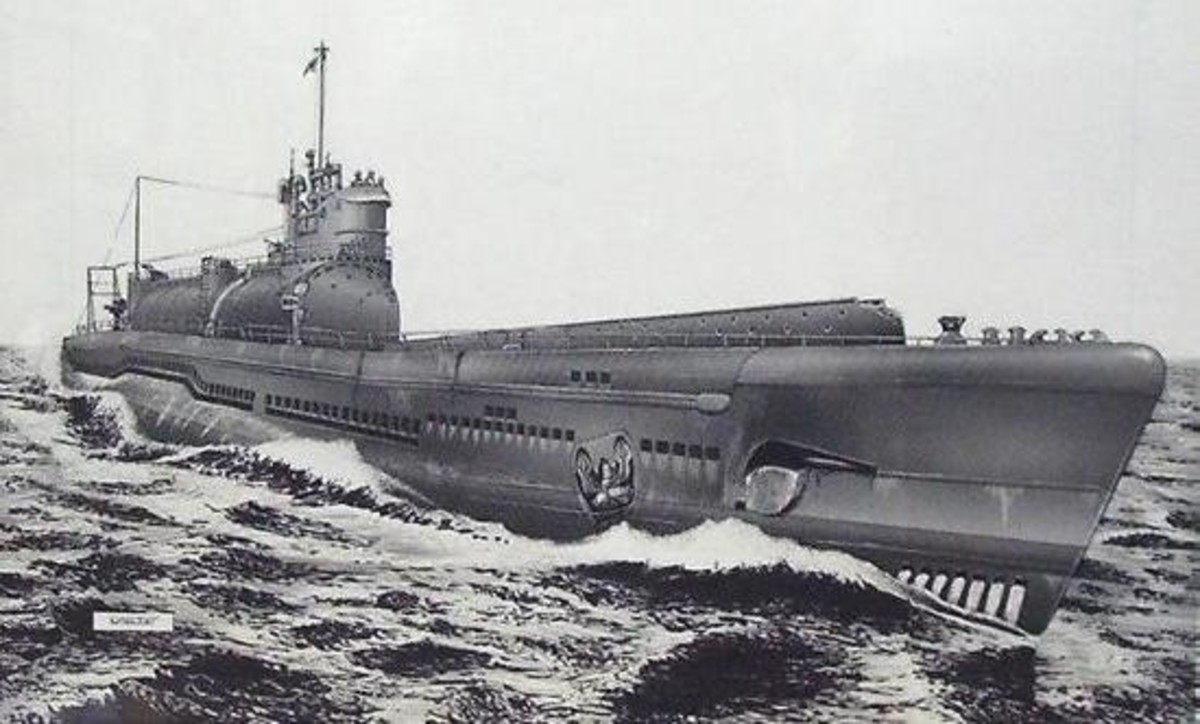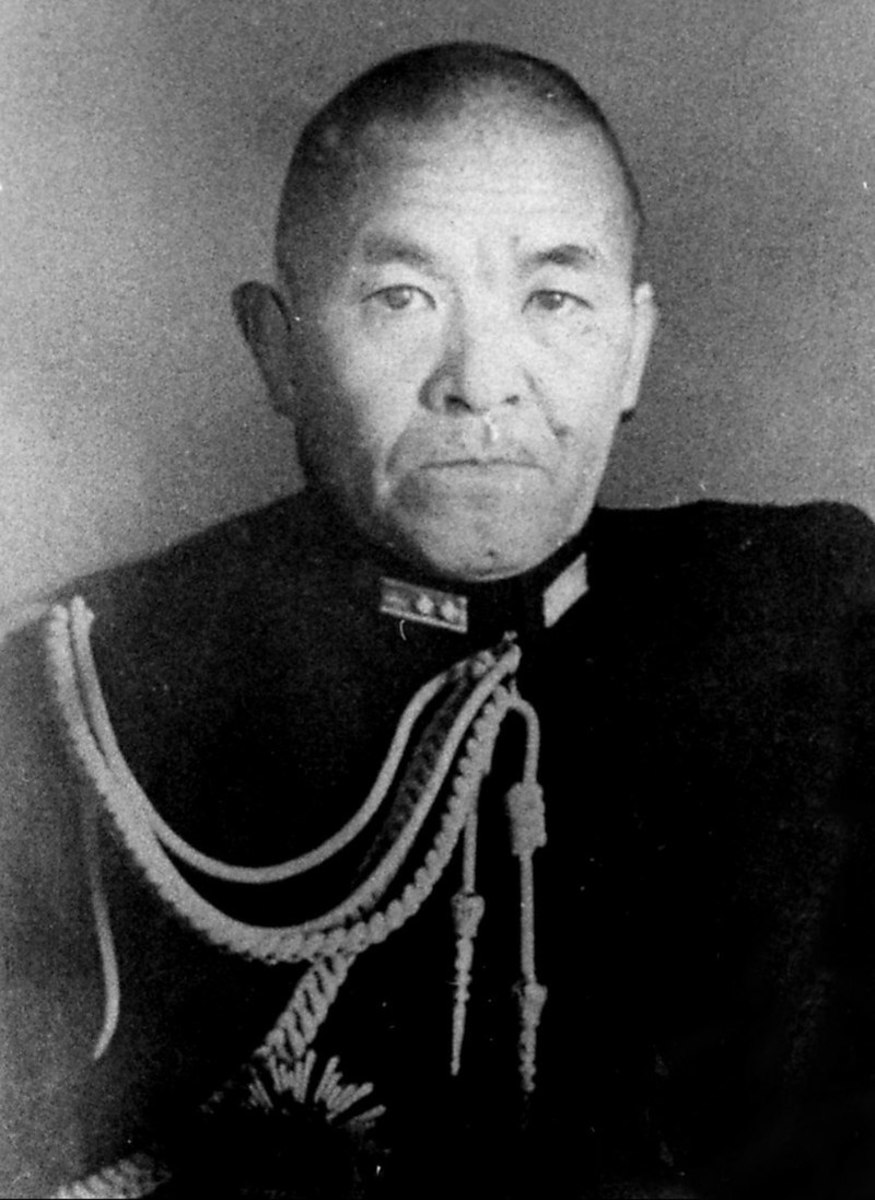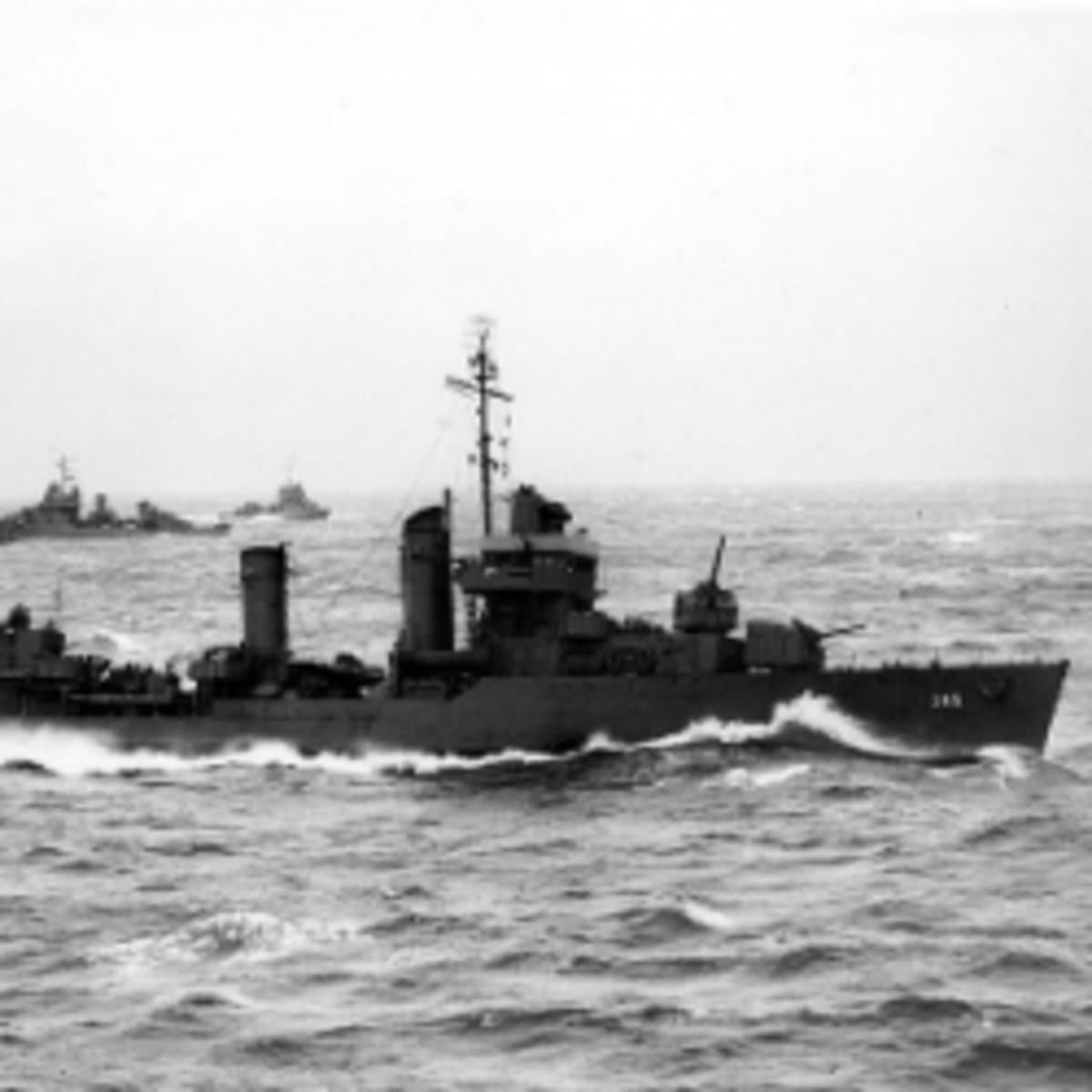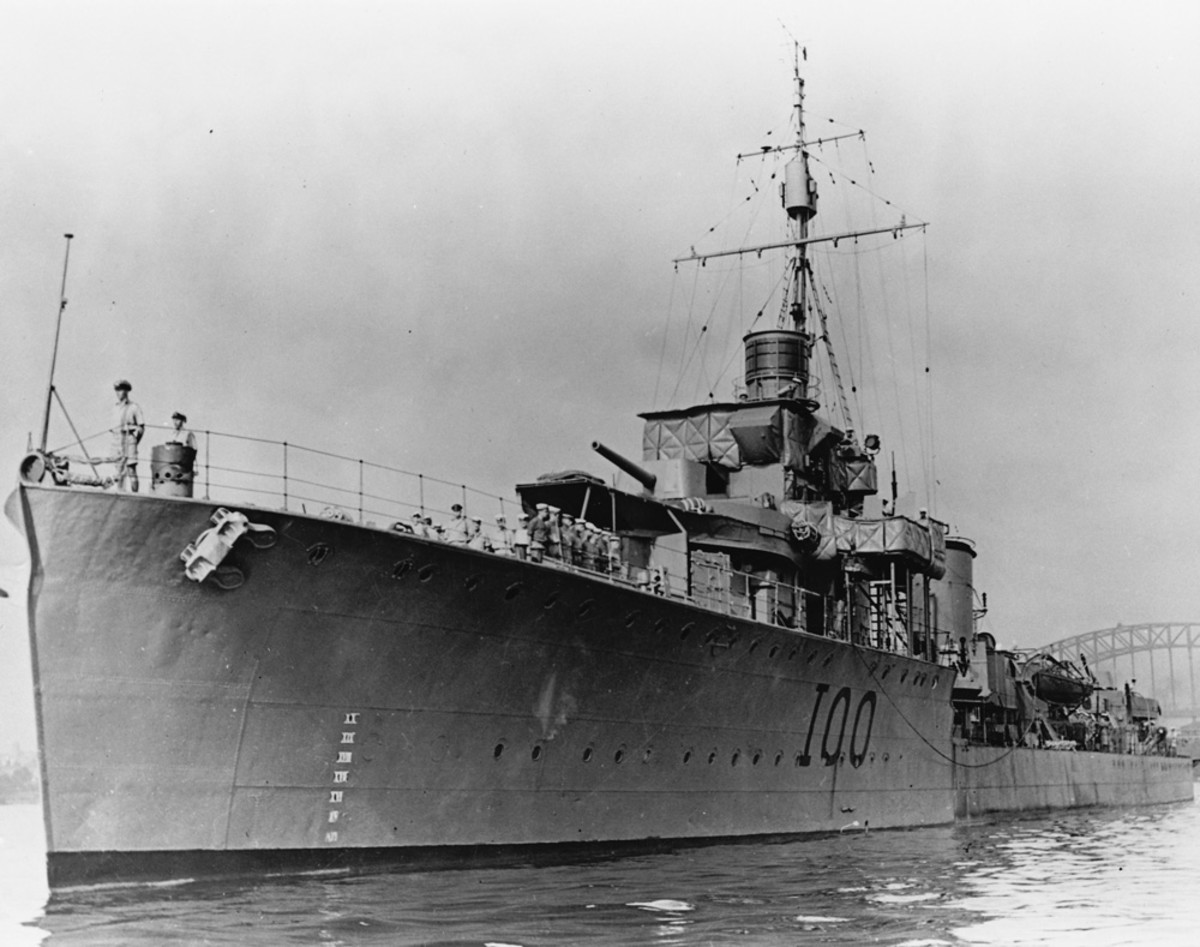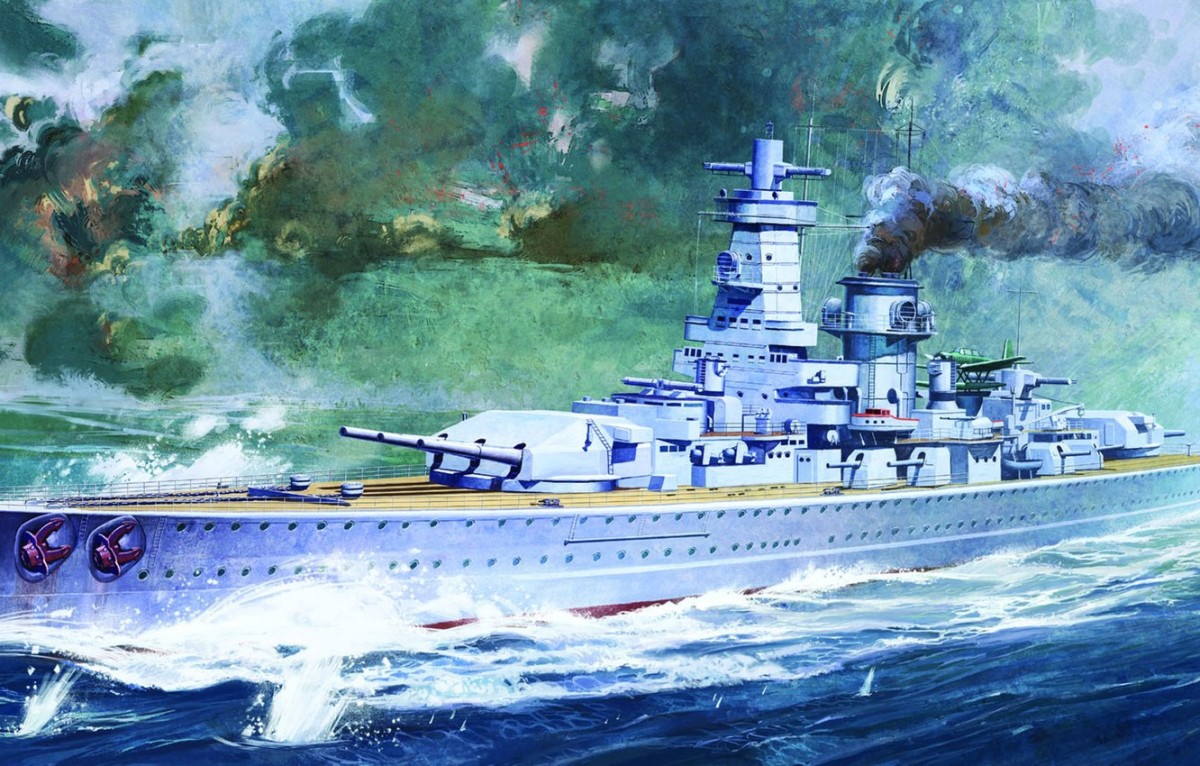HMAS Melbourne - The Hoodoo Ship
HMAS Melbourne - The Hoodoo Ship
On the night of the 3rd of June 1969 the South China Sea was glassy smooth. A full moon shone down upon that sea turning its surface to a burnished silver. And on the sea floated a flotilla of ships- warships, playing war games.
The South China Sea was glassy smooth
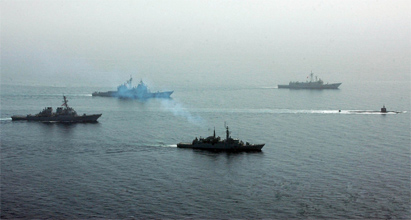
The exercise fleet was divided into two
The fleet was divided into two segments but, overall, they were under the command of an American Admiral aboard the giant United States Aircraft Carrier, USS Kearsage . The smaller of the two groups comprised only six vessels: three American destroyers, or ‘tin cans’ as the Americans ironically called them, a British Anti-submarine frigate, a New Zealand frigate, and our own HMAS Melbourne , light fleet aircraft carrier.
Mebourne with a destroyer either side
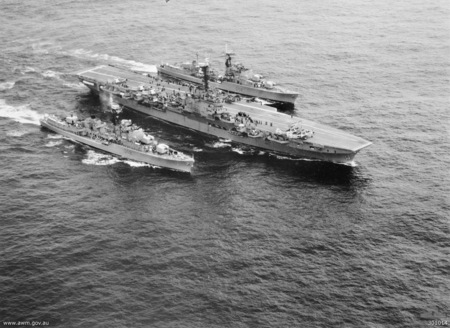
Captain John Stephenson was in charge on Melbourne
In command of these six was our own Rear Admiral Buster Crabbe, a World War Two Veteran and very popular hero. But at this moment, at 2-30 in the morning, Admiral Crabbe was asleep in his sea cabin. Such was his right. In charge, up on the bridge of the Melbourne was Captain John Stevenson, a four-ring captain.
Stevenson was very experienced. He knew that the Melbourne, operating on manoeuvres at night was a very dangerous ship indeed. That was always at the forefront of his mind. The job of the Melbourne that night was to seek out and to destroy a so-called ‘enemy’ submarine. This meant aircraft operations. This meant night takeoffs.
The Frank E. Evans
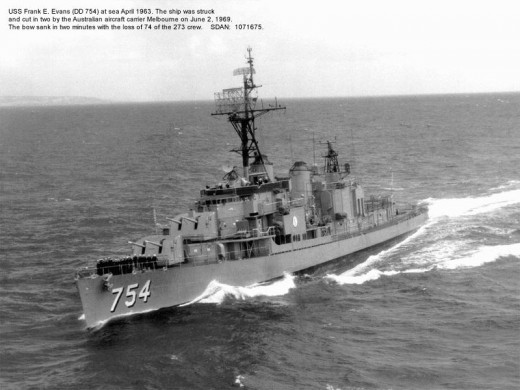
It was excellent weather for a submarine attack
The sea was calm, the night clear. Excellent weather for a submarine attack. In order to thwart such an attack the ships, all port-hole lighting blacked out, navigation lights dimmed, zigzagged from time to time. During the evening numerous changes of course had been ordered.
You can picture the scene. On the bridge Captain Stevenson is surveying his little flotilla, his night field glasses to his eyes. He is checking to see that every ship is exactly on station; staying exactly where it should belong in relationship to his vessel. All are steaming along a twenty-four knots. Or, in modern parlance, almost fifty kilometres an hour.
Australia Flagship
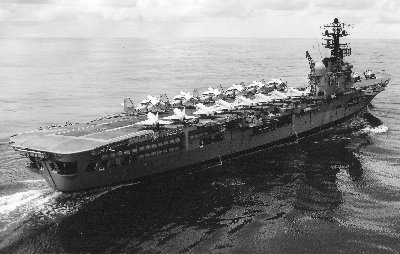
Each green blip on the radar represented one of his escort ships
Every now and again the Captain Stevenson takes his eyes off the ships around him and goes across to an radar screen. He can see on the grey-green backdrop of the display, five tiny, translucent, blips. Each of those blips represents one of his escorts.
Blip-blip. Blip-blip. Blip-blip, comes the sound of the incoming radar signal.
All is well. Every ship is safely on station.
War games include potential attacked from aircraft
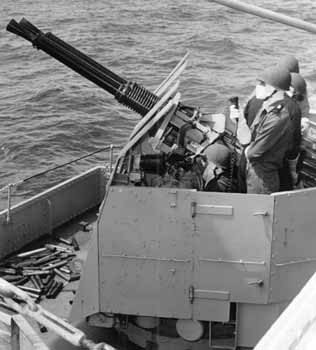
Just off the port bow lay USS Evans
Out ahead of HMAS Melbourne, about 3500 feet, or about seven lengths of Melbourne’s flight deck ahead, and just off his port bow lies the American destroyer, Frank E Evans.
Now the Frank E Evans is not just any old American fighting ship. The Evans is a legend. Twenty-five years old by this time, she had fought in the Second World War. She had a supreme fighting record, having brought down twenty-five enemy aircraft in that conflict, including several Kamikazes. The Evans was the pride of the American South China fleet. Old, but still fast, she was their icon.
The Evans had already taken up position behind Melbourne four times that night
It was the Evans job on this night to act as the carrier’s ‘aeroplane guard.’ That meant, that she had to be stationed behind and slightly to the left of the Melbourne, but, because of earlier manoeuvres she now lay ahead. Throughout the long evening and night the Melbourne had changed course many times. The Evans had taken up her position behind the larger ship on no few than four times. Now she was to do so again.
Co-ordination is essential
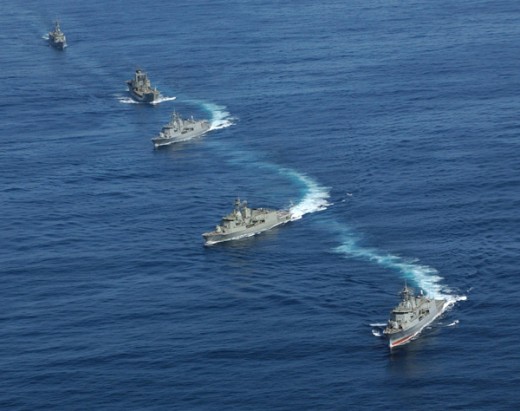
Scanny with his binnoculars, Captain Stephen issued his orders
Scanning the ships once more with his binoculars Captain Steven picked up the microphone on his inter-ship radio link. His said, quietly and distinctly.
“To the Frank E Evans. Take airplane guard my port quarter. Melbourne’s course 260 degrees.”
There was an acknowledgement, “Roger” from the little destroyer. But nothing happened. The Evans continued to steam on as if no order had been given.
The Captain watched. They seemed to be taking a damn long time to turn.
What was happening?
He continued to watch. What was happening? What Captain Stevenson did not know is that his counterpart, the experienced Commander McLemore, Captain of the Evans was no longer on the bridge. He had relinquished control and gone to his cabin to sleep. In charge now on the bridge was a young American Lieutenant with less than a year’s experience at sea.
What happened when that order came in no one really knows. There seemed to be confusion. With all the ships lights dimmed the Melbourne’s silhouette on that moonlit night gave little away. Was she steaming towards them or away. It is difficult to tell the back from the front of a carrier under such conditions
Evans jumped into top speed and began to turn
Anyway, just as Captain Stevenson was about to repeat his order something unexpected happened. A huge wave suddenly erupted behind the little destroyer as it dug in its stern under full power. A massive bow wave creamed away from bows. She had jumped into top speed and had begun to turn.
But instead of turning in a broad anti-clockwise circle as expected- a course which would bring her around and astern of the Carrier- she turned to starboard.
Now, although still far ahead, she was turning right across the bigger ship’s her bows.
"Watch it, Evans - You're on a collision course!"
Instantly Stevenson picked up the microphone and called the ship in front.
“Watch, Evans, you’re on a collision course.”
A moment later he called down the voice-pipe to the steering position below.
“Hard left rudder.”
Now, unlike the movies, where you invariably see the ship’s wheel in the wheelhouse on the bridge, on an aircraft carrier that wheel is not on the bridge. Neither is it made of teak and brass-bound. On a carrier such as Melbourne the ship’s wheel is four decks down. It is right down aft. And it is a huge wheel made of steel.
Hard left rudder!
Standing at the ship’s wheel an able seaman, under the watchful eyes of the coxswain, swung the big steel wheel. Once, twice, three times he swung it up and around to the left until it went onto full lock.
But the big ship did not respond. It ploughed on. You see, Ladies and Gentlemen, a 20,000 ton ship, speeding along in a straight line at over forty kilometres an hour does not turn like a Mini-minor in a car park. Its momentum will not allow that. So instead it sped on. Closer and closer it got to the American destroyer.
She was very close
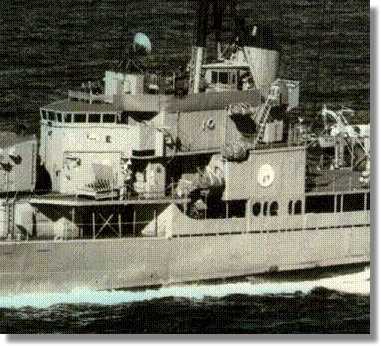
20,000 tons travelling at 40 kilomers a hours in a straight line...
Then it started to turn. Inch by inch it slowly swung away to port. The American ship was now away and off to the right. They’d missed her. Thank God for that. Captain Stevenson breathed a sign of relief. Then, straight away he knew he had to check his position in relation to the remaining four ships. Where were they?
He crossed to the radar screen. ‘Blip-bip. Blip-bip. Blip bip’ -all okay.
Good. Good. Then he heard a voice calling.
“Captain, sir. Captain Stevenson, sir!”
It was his signalman.
“Yes?”
“Captain -Evan’s, sir, She’s still turning. Evans is turning hard right.”
Full astern both engines!
For some reason the little American destroyer had turned the other way.
Stevenson looked up. God All Mighty! She was only two hundred feet away.
She was coming right under his bows. There was nothing he could do. God!
“Full astern both engine!”
Clang clang went the engine telegraphs. Then, the next moment...
The noise was almost indescribable. 20,000 tons of steel travelling at thirty miles an hour crashing into the 2,000 ton destroyer. There came a ear-splitting shriek as steel tore through steel. There came the sound of hissing, high-pressure steam, a series of explosions, the yells and screams of men.
“Away all sea boats!”
“Drop live rafts.”
“All life buoys over the side”
“All hands, all hands, stand by to rescue survivors.”
Frank E Evans after collision, blow section gone
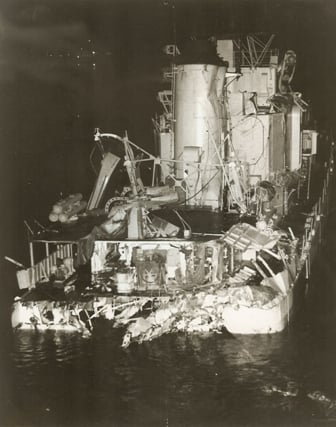
Captain Stephen acted quickly
Stevenson acted quickly. The crew of Melbourne were quick to respond also. But the tragedy had already occurred. The Melbourne severed the little destroyer; cut her clean in half. In less than two minutes the bow section of USS Frank E Evans sank to the bottom of the South China Sea taking seventy-four American sailors to a watery grave.
By the quick action of Melbourne 199 lives were saved that night. But it wasn’t enough. 199 saved yes. But 74 drowned. The news flashed around the world. The radio stations had it. The television stations had it. By next day it was in all the newspapers. And the headlines said it all.
‘Hoodoo ship strikes again.’
The Melbourne had sunk another destroyer.
The USS Larsen, who had nearly been hit herself the day before, keeping what is left of Evans afloat
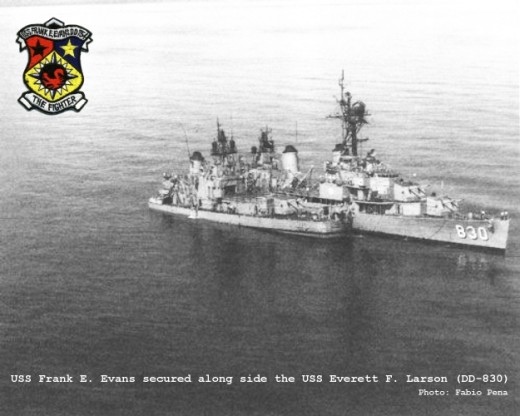
History of HMAS Melbourne
HMAS Melbourne was born on the Clydebank way back in 1943. That’s when her keel was laid. She was launched a year later and work proceeded readying her for action. Of course, by now, the war against Germany was all but over. All of Germany’s surface ships were finished. The Bismark had been sunk. As had the Admiral Graf Spee, and the Hipper. No, Melbourne was built to fight the Japanese.
But by the time she was completed and ready for action the giant B29 bomber, called Enola Gay, had already dropped its atomic bomb on Hiroshima. A second A bomb dropped on Nagasaki brought hostilities to a close. Those two deadly bombs called Little Boy, and Fat Man had done their devastating work. The Japanese surrendered. World War Two was over.
There was dancing in the street. But there were an awful lot of weapons of war still around. And they’d cost a lot of money to build.
After World War Two everyone knew the real power lay with aircraft carriers
With the War over the military experts studied the successes and failures of that war. They were particularly interested now in the role of aircraft carriers. You see, they realised that the big ‘capital ship,’as they called them, the huge ‘battle wagons’ with their 15 and 16 inch guns were obsolete. They could not stand up to attacks from aircraft. The sinking of the British heavy weights, Repulse and the Prince of Wales were an example of this. No, the power now lay with aircraft carriers- and everyone wanted them.
Great Britain had at least a dozen for sale. Who would buy? Well, the Argentineans bought some. The Canadians bought some. So did India. Australia wasn’t going to miss out. We bought two: HMS Majestic, and HMS Terrible.
HMAS Voyager
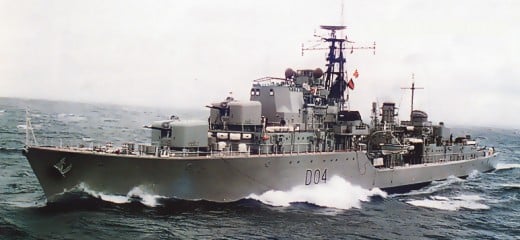
My old ship, the aircraft carrier Sydney, was a lucky ship
The Terrible was renamed HMAS Sydney. And she was a good ship. And she bore a proud name. A lucky ship. She came out here in 1949 and served well. In the Korean War from 1950 to 1952 she covered herself in glory flying hundreds of sorties against the enemy. I actually served on that ship for a few months in 1955. She was a lucky ship.
The same could not be said for her sister. HMS Majestic, renamed HMAS Melbourne, arrived in Australia in 1956. I remember the day distinctly for it I’d been in the Navy exactly two years to the day. She steamed up the harbour, her sailors resplendent in their best uniforms lining her decks. On the flight deck two dozen aircraft, Sea Venom Jets and Fairy Gannet anti-submarine aircraft stood, wings folded, in neat rows. Her military band was playing, Anchors Aweigh, and Waltzing Matilda.
Melbourne was everybody's darling - until the accidents started to happen
She was everybody’s darling in those days. Could do no wrong. The people of Melbourne especially loved her for, after all, she was named after their city. And what a ship: big, beautiful, and deadly. She was the penultimate in defence. Could carry a real fight to any enemy which threatened our shores.
The aircraft carriers Melbourne and Sydney weren’t big ships compared with many aircraft carriers. For example, the British had the Ark Royal and the Eagle which were nearly twice as big. And the Americans- well, they had ships like the USS Constellation at 78,000 tons, and the Enterprise, the ‘Big E’ weighing in at 85,000 tons and bigger than the Queen Mary. Unlike the Melbourne, which carried 20 planes, the Enterprise carried over 100. So, in comparative terms, our carriers were not big.
But they were big enough. 20,000 tons, 700 feet long, carrying a crew of 16,00 men, they were like small, floating towns.
Many Ferry, the South Steyne
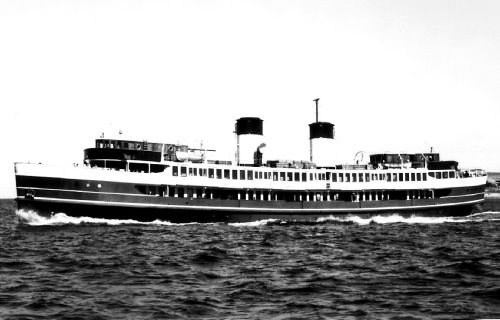
Not yet a 'hoodoo,' Melbourne reputation was gradually becoming tarnished
Then the accidents started to happen. A lot of people don’t realise just how much damage the unlucky Melbourne did in her long term of commission from 1956 to 1982. In those years thirty-one aircraft crashed on her decks, or went over the side, or were lost in some way or another. Thirty one! Many pilots died.
And most people know that she was involved in collisions with two other ships. But Melbourne actually collided with seven- yes, seven! other vessels. A large container ship, a tug boat, even our own Sydney Harbour Ferry which is now a floating restaurant down in Darling Harbour, the South Steyne.
The Melbourne-Voyager Disaster: Eighty-eight dead!
But she came most disfavourably to the public eye when, at 10-30 in the evening, whilst exercising off Jervis Bay on the New South Wales south coast, she collided with, and cut in half, our own HMAS Voyager. Eighty-eight sailors perished that night. It was our worse military tragedy in peace time. Eighty-eight sailors dead.
Can you imagine then, the rage, the uproar, the total disbelief when that same ship, operating under similar circumstances, i.e. flying aircraft off at night, collided with and cut in two the pride of the American South China Sea fleet! Unbelievable!
Look at the damage systained.
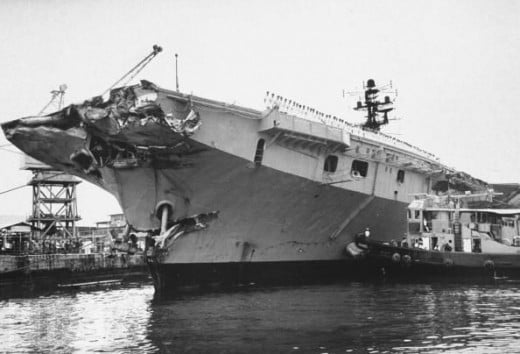
It as the Americans who first called her the 'Hoodoo Ship'
It was the Americans who first called the Melbourne ‘The Hoodoo Ship.’ From that time on everyone knew her everywhere as the ship to watch out for. From after the Voyager Disaster the Press, the Media, were on to her every move. They never picked up on her good deeds. Like the time she provided food, and power, and all manner of help when Cyclone Tracy devastated Darwin in December 1975. Or all of the rescues she attended, or the pulling of boat people from the sea.
No, all they recalled was the tragedies, the accidents, the mishaps.
A look at Melbourne bow after the Voyager Disaster
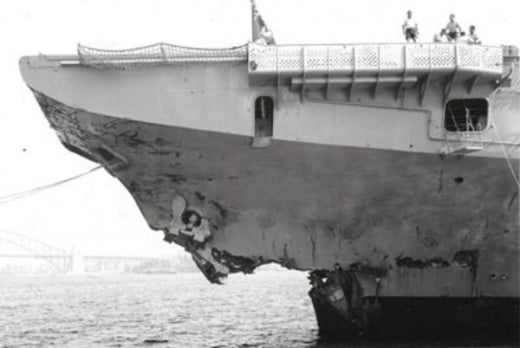
HMAS Melbourne: the unlucky ship, the jinxed ship - the Hoodoo Ship...
On the night of the 3rd of June 1969 the South China Sea was glassy smooth. And a full moon shone down upon its surface turning it to a burnished silver. And on the surface of that sea were a fleet of ships- warships, playing war games...as they do, even today. But it shines no more on the 162 sailors, both Australian and American who went to their watery graves below the relentless, grinding, cruel bows of HMAS Melbourne- the unlucky ship. The jinxed ship. The Hoodoo Ship.
More on the writer
- Tom Ware Public Speaking The Prince of Storytellers
Tom Ware Public Speaking! Tips, events and videos to help you become a gifted speaker. Visit now!

